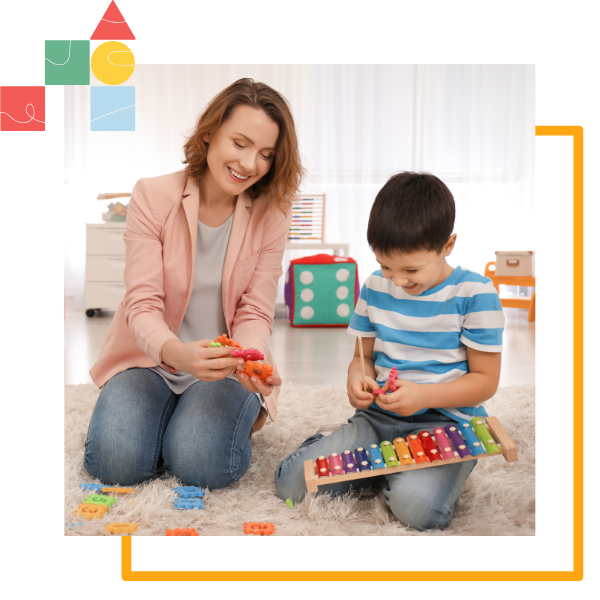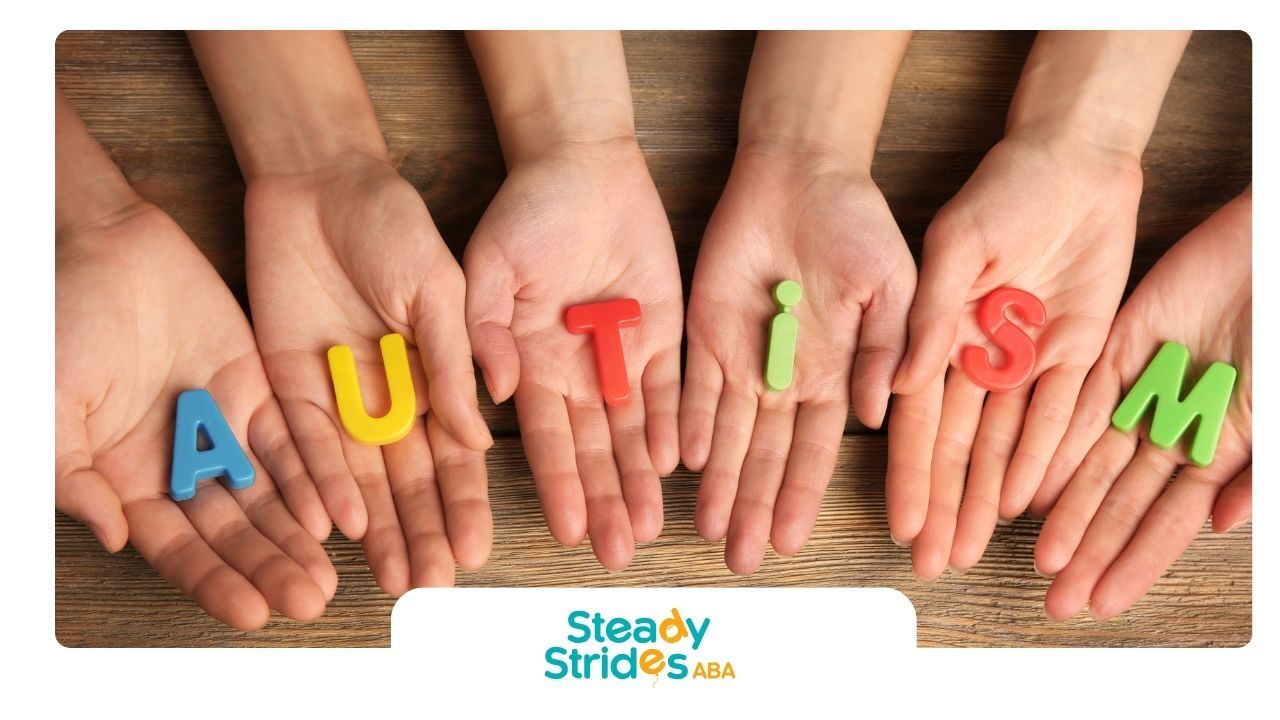Applied behavior analysis (ABA) therapy is very important for helping people with autism spectrum disorder (ASD) and other developmental disorders. In this type of therapy, basic skills training (BST) plays a crucial role as an effective method. It helps people learn important skills that can boost their confidence and independence. This clear and organized method helps individuals learn and improve their lives.
The Essence of Basic Skills Training in ABA
Basic Behavior Skills Training, or BST, is a way of teaching that uses applied behavior analysis. This versatile approach breaks down complicated skills into smaller, easier steps using specific components. This makes it simpler for people to learn and get new behaviors. For example, think about a child learning to tie their shoes. BST helps by breaking this hard task into easy steps, like crossing the laces, making loops, and tucking them in.
One great thing about BST is that it can be used for anyone, no matter their age or what skills they need. BST works well for teaching many different skills. This includes simple self-care tasks and more advanced social skills. Whether it’s helping a child learn how to dress or aiding an adult in handling social interactions, BST is a flexible way to help someone learn new skills.
Defining Basic Skills Training within the ABA Framework
In ABA, understanding and changing behavior is very important. Basic skills are not just things to check off a list. They are the building blocks for a person’s growth and happiness. These skills cover a wide range, including simple tasks like eating and dressing, and more complicated skills like communication and social interactions.
The BST method is key in ABA interventions. It provides a clear and organized systematic approach to help people learn new skills, offering an effective approach for understanding what they need to learn, why it is important, and how to do it.
One of the main reasons BST works well is that it uses positive reinforcement. It understands that people learn better in a positive space. BST uses rewards and praise to encourage individuals. This makes the learning process fun and fulfilling.
The Significance of Basic Skills for Individuals with ASD
Imagine a world where daily tasks feel impossible. Communication can feel like a tricky puzzle, and social interactions can be tough. For people with autism spectrum disorder (ASD), this is often their reality. Learning new skills can seem difficult but is very important.
Basic skills training steps in as a source of hope and help. It creates a safe space where people with ASD can learn and grow. This training helps them gain confidence and live more independently.
As they learn new skills, many parts of their lives improve. Being able to communicate well, have social interactions, and handle daily tasks makes a big difference. It greatly enhances their overall quality of life.
Core Components of Basic Skills Training
Basic Skills Training focuses on four important parts. Each part helps create successful learning results. These key elements come from behavioral science and work together to improve how skills are gained.
The main parts are instruction, modeling, rehearsal, and feedback. These pieces create a complete plan for learning. By organizing these parts well, therapists help people learn new skills and reach their goals one step at a time.
Instructional Techniques in ABA
Instructional techniques in Applied Behavior Analysis are not just ways to teach. They are tools specifically made to change behavior and help with skill development. These techniques come from the core ideas of behavior analysis. They focus on clear steps, consistent practices, and knowing how people learn best.
A key part of good ABA teaching is breaking down difficult tasks into smaller steps with concise instructions. For example, when teaching a child to write their name, an ABA therapist does not show the entire word all at once. Instead, they break it down into single letters. Then, they look at the smaller strokes needed to make each letter.
Also, positive reinforcement is very important in ABA teaching. Therapists use praise, rewards, or other positives to boost good behaviors. This helps to gradually reduce the level of support, celebrate achievements, and builds a supportive and encouraging learning atmosphere.
Modeling Positive Behaviors for Effective Learning
Modeling behaviors is a very effective way to teach basic skills. This method uses our natural ability to learn by watching and copying others. It gives a visual reference example for people who want to learn new skills. When someone sees the correct execution of the desired behavior shown clearly, they can better understand what to do and what to expect.
For instance, think about a therapist teaching a child to ask for a toy. Instead of just saying how to do it, the therapist can show the child how to approach another kid. The therapist can make eye contact and say the right words, like, "May I please play with the truck?"
Here’s why modeling is so effective in skills training:
- Visual Learning: Modeling helps visual learners see the target behavior in action.
- Clear Expectations: People see not only the behavior but also the right way to do it.
- Increased Engagement: Watching others makes learning more interesting and relatable.
Strategies for Implementing Basic Skills Training
Implementing a good BST needs careful planning. It also requires a clear understanding of what each learner needs, how they learn, and what their goals are. It's important to create a safe and organized space where learners can take risks, make mistakes, and enjoy their successes.
Using visual aids is helpful. Adding real-life situations to practice sessions is also important. Plus, giving regular chances for learners to use what they have learned is key to making the effectiveness of BST work well in different settings and various settings. Working together with therapists, caregivers, and teachers has a vital role in making sure the approach is strong and effective.
Customizing Approaches to Meet Individual Needs
No two people are the same. This is especially true when it comes to learning new skills. Basic Skills Training (BST) understands that what works for one person may not work for another. Just like a tailor makes clothing for specific shapes, BST programs are crafted to meet each person's unique needs and learning styles.
The first step is to assess the person’s strengths and weaknesses. Are they visual learners? Do they learn better by doing things? What drives them? What do they want to achieve? By answering these questions, therapists can create a BST program that truly fits the individual. This helps keep them engaged and allows progress.
This personalized method applies to different scenarios in every part of the training. It influences the choice of materials and how fast or slow skills are introduced. By focusing on individual needs, BST provides a great learning space. Here, people feel strong and ready to succeed.
Continuous Assessment and Adaptation for Progress
In the ever-changing world of Basic Skills Training, ongoing assessment acts like a compass. It helps therapists make the changes needed to keep the program on track. This process means watching progress closely, gathering information, and looking at trends to find out where someone is doing well or facing issues.
For example, a therapist might work with a child to improve communication skills. They would pay attention to how the child uses new vocabulary words. If the child learns new words well from flashcards, the therapist can slowly use more complex language. On the other hand, if the child finds it hard to remember some words, the therapist could change their teaching methods by adding more visual aids or activities.
This ongoing feedback, based on assessment and data, allows therapists to provide constructive feedback as a crucial component of BST to adjust their methods, ensuring correct responses and celebrate each success along the way. Continuous assessment makes Basic Skills Training a flexible and responsive process.
Basic Skills Training Across Environments
The main aim of basic skills training goes beyond the therapy room. We want people to use their new skills in many places, like at home, in school, and in the community. This idea is called generalization.
To encourage generalization, basic skills training includes methods that help people practice acquired skills in different workplace environments. This can involve working with various people and using different materials. It allows people to understand that the skills they learn in one place are useful in other places too. By connecting therapy to real-life situations, basic skills training helps individuals be more independent and confident in their daily lives.
In-Home Training Strategies for Families
Family is very important for a person’s growth and development, especially those taking skills training. Because of this, BST focuses on getting families involved. They want to take the ideas of ABA therapy from the therapy room and bring them into the home. In-home training helps families support their loved ones on the way to being more independent.
Therapists work closely with families. They give guidance and support as families learn to use BST techniques in their daily lives. Together, they create a steady and clear environment where the individual can feel supported and excited to practice their new skills.
In-home training can mean breaking down everyday tasks like getting dressed or brushing teeth into smaller, manageable steps. Parents and caregivers find out how to give clear instructions, offer positive reinforcement, and help their loved ones practice skills in a familiar and comfortable setting.
Unlocking basic skills is a critical step in supporting children with autism, and in-home ABA therapy near me provides a personalized approach that works within the comfort of your home. Local therapists can offer one-on-one sessions tailored to your child’s needs, helping them develop essential skills like communication and daily tasks. If you’re looking for expert support, reach out today to explore how in-home ABA therapy can make a meaningful impact on your child’s development.
Application in School Settings for Comprehensive Support
School is like a small version of the bigger world. It gives many chances for social interactions, communication, and learning. Using Behavioral Skills Training (BST) in schools can greatly help individuals with autism spectrum disorder (ASD). It helps them do well in school, make friends, and manage their feelings.
Teachers who know how to use BST are important. They create a welcoming and supportive classroom where students with ASD feel safe and respected. They focus on clear communication, visual tools, and consistent routines to keep anxiety low and help students learn better.
BST in schools is not just about traditional learning. It also includes training for social skills, developing communication, and managing feelings. By focusing on these important areas, BST helps students with ASD build real friendships, speak up for themselves, and handle challenges in school.
Advanced Techniques in Basic Skills Training
As Applied Behavior Analysis grows and changes, the methods used for skills training do too. The basic parts are still the same, but therapists now have more advanced tools to enhance the effectiveness of behavioral skills training. These tools help with learning, applying skills in daily life, and solving tough behavior problems.
These advanced methods use the latest technology, fresh teaching ideas, and a better grasp of how our brains work. Therapists keep up with new developments in the field. They work hard to offer the best and most personalized support for each individual.
Integrating Technology for Enhanced Learning
Technology has become an integral part of our daily lives, transforming the way we communicate, learn, and interact with the world. Embracing this digital revolution, basic skills training increasingly incorporates technology to create engaging and effective learning experiences, making sessions more interactive, visually stimulating, and motivating.
Imagine a therapist using a tablet to display colorful visuals while teaching a child about different emotions. The child can then touch the screen to select the emotion that matches a particular facial expression or scenario. This interactive approach not only captures the child's attention but also makes the learning process more enjoyable and memorable.
Role of Play in Skills Acquisition and Generalization
Play is often seen as just a fun activity for kids. However, it plays a big role in learning and growth. Basic skills training uses play in therapy sessions. This makes learning exciting and enjoyable. Through play, kids pick up new skills and can use them in different situations.
Think about a therapist and a child pretending to shop at a grocery store. The child pretends to be a shopper. They learn to recognize different foods, ask for items using the right words, and follow steps—all while having fun.
Play also offers a safe space for kids to practice the skills they have learned. They can try out different social roles and strengthen their problem-solving skills.
Measuring Success in Basic Skills Training
In Basic Skills Training, success is not just about hitting goals on a list. It is about how it changes a person's life for the better. Success means seeing someone gain independence, feel more confident, and handle challenges in a stronger way.
Measuring success takes several steps. It involves collecting data on progress, watching how skills are used in real life, and listening to the person and their family. Their thoughts, experiences, and goals are very important signs of how well someone is doing and growing.
Setting Benchmarks and Celebrating Milestones
Setting goals and celebrating achievements are key parts of basic skills training. They provide a clear path for improvement and help people feel proud of their successes. This organized way of working means breaking big goals into smaller steps that are easier to achieve. This helps people feel in control and motivated as they go through their therapy.
These goals act as markers. They help therapists track progress, change plans when needed, and make sure that the person is on the right path to reach their main goals. Celebrating achievements, whether small or big, encourages good behavior, boosts confidence, and supports a love of learning.
Early intervention using ABA often includes Basic Skills Training, which helps with developmental delays and offers personal support during a child's crucial early years. By focusing on key areas like communication, social skills, and complex skills play, early intervention gives children the tools and strategies they need to do well in different situations.
Long-term Benefits of Early Intervention Through ABA
Early intervention is very important in Applied Behavior Analysis, especially for people with autism spectrum disorder (ASD). Research shows that if children with ASD get help early, they may see more positive results in the long run. This help affects their communication skills, social skills, and overall quality of life.
Early intervention using ABA often includes Basic Skills Training. This, which helps with developmental delays and offers personal support during a child's crucial early years. By focusing on key areas like communication, social skills, and complex skills play, early intervention gives children the tools and strategies they need to do well in different situations.
The benefits of early intervention last well into adulthood. It helps in educational success, job opportunities, and living independently. When we invest in early intervention, we invest in a person's future. This support can help them reach their full potential and live happy, productive lives.
Collaborative Efforts in ABA Basic Skills Training
ABA basic skills training knows that no one works alone. It needs teamwork. A group of caring people, like therapists, parents, caregivers, educators, and other experts, must work together. This helps build a supportive place for learning that boosts a person's growth.
Good communication is key to this teamwork. When therapists and families talk often, it helps keep therapy sessions on track. This way, the strategies learned in therapy can continue at home. This promotes skill use and is very important for success.
Engaging Parents and Caregivers as Active Participants
Parents and caregivers play a special and vital part in a person's journey, especially in basic skills training using ABA. Because of this important role, BST involves parents and caregivers as key members of the therapy team, ultimately contributing to positive outcomes. This teamwork allows the lessons from ABA to fit into daily life, not just therapy sessions.
This teamwork starts with honest talks. Therapists work to learn the family’s values, goals, and worries. They use this understanding to create personal treatment plans. Parents and caregivers receive helpful information on ABA methods and find out how to use these strategies well in different situations.
By getting parents and caregivers involved in their loved one’s therapy, BST shows that they matter and helps build a strong connection between the person, their family, and the therapy. This teamwork makes a supportive system where everyone joins together to help the individual succeed.
Interdisciplinary Teams for a Holistic Approach
Basic Skills Training in ABA uses different methods to help people with autism spectrum disorder (ASD). Interdisciplinary teams are very important in this process. They offer a complete care plan that looks at many different areas, so individuals get help from various points of view.
For children with autism spectrum disorder, BST helps them learn important life skills and promotes skill acquisition, offering various skills and numerous benefits. It gives them the power to pick up new behaviors, get better at social interactions, and handle daily tasks. The way BST is organized but flexible allows it to help with different developmental disabilities. It breaks down difficult tasks into smaller steps and helps develop important skills.
For children with autism spectrum disorder, BST helps them learn important life skills and promotes a wide range of skills acquisition. It gives them the power to pick up new behaviors, get better at social interactions, and handle daily tasks. The way BST is organized but flexible allows it to help with different developmental disabilities. It breaks down difficult tasks into smaller steps and helps develop important skills.
Early intervention using ABA often includes Basic Skills Training, which helps with developmental delays and offers personal support during a child's crucial early years. By focusing on key areas like communication, social skills, and complex skills play, early intervention gives children the tools and strategies they need to do well in different situations.
Long-term Benefits of Early Intervention Through ABA
Early intervention is very important in Applied Behavior Analysis, especially for people with autism spectrum disorder (ASD). Research shows that if children with ASD get help early, they may see more positive results in the long run. This help affects their communication skills, social skills, and overall quality of life.
Early intervention using ABA often includes Basic Skills Training. This, which helps with developmental delays and offers personal support during a child's crucial early years. By focusing on key areas like communication, social skills, and complex skills play, early intervention gives children the tools and strategies they need to do well in different situations.
Role of Play in Skills Acquisition and Generalization
Play is often seen as just a fun activity for kids. However, it plays a big role in learning and growth. Basic skills training uses play in therapy sessions. This makes learning exciting and enjoyable. Through play, kids pick up new skills and can use them in different situations.
Think about a therapist and a child pretending to shop at a grocery store. The child pretends to be a shopper. They learn to recognize different foods, ask for items using the right words, and follow steps—all while having fun.
Play also offers a safe space for kids to practice the skills they have learned. They can try out different social roles and strengthen their problem-solving skills.
Measuring Success in Basic Skills Training
In Basic Skills Training, success is not just about hitting goals on a list. It is about how it changes a person's life for the better. Success means seeing someone gain independence, feel more confident, and handle challenges in a stronger way.
Measuring success takes several steps. It involves collecting data on progress, watching how skills are used in real life, and listening to the person and their family. Their thoughts, experiences, and goals are very important signs of how well someone is doing and growing.
Setting Benchmarks and Celebrating Milestones
Setting goals and celebrating achievements are key parts of basic skills training. They provide a clear path for improvement and help people feel proud of their successes. This organized way of working means breaking big goals into smaller steps that are easier to achieve. This helps people feel in control and motivated as they go through their therapy.
These goals act as markers. They help therapists track progress, change plans when needed, and make sure that the person is on the right path to reach their main goals. Celebrating achievements, whether small or big, encourages good behavior, boosts confidence, and supports a love of learning.
Early intervention using ABA often includes Basic Skills Training, which helps with developmental delays and offers personal support during a child's crucial early years. By focusing on key areas like communication, social skills, and complex skills play, early intervention gives children the tools and strategies they need to do well in different situations.
Long-term Benefits of Early Intervention Through ABA
Early intervention is very important in Applied Behavior Analysis, especially for people with autism spectrum disorder (ASD). Research shows that if children with ASD get help early, they may see more positive results in the long run. This help affects their communication skills, social skills, and overall quality of life.
Early intervention using ABA often includes Basic Skills Training. This, which helps with developmental delays and offers personal support during a child's crucial early years. By focusing on key areas like communication, social skills, and complex skills play, early intervention gives children the tools and strategies they need to do well in different situations.
The benefits of early intervention last well into adulthood. It helps in educational success, job opportunities, and living independently. When we invest in early intervention, we invest in a person's future. This support can help them reach their full potential and live happy, productive lives.
Collaborative Efforts in ABA Basic Skills Training
ABA basic skills training knows that no one works alone. It needs teamwork. A group of caring people, like therapists, parents, caregivers, educators, and other experts, must work together. This helps build a supportive place for learning that boosts a person's growth.
Good communication is key to this teamwork. When therapists and families talk often, it helps keep therapy sessions on track. This way, the strategies learned in therapy can continue at home. This promotes skill use and is very important for success.
Engaging Parents and Caregivers as Active Participants
Parents and caregivers play a special and vital part in a person's journey, especially in basic skills training using ABA. Because of this important role, BST involves parents and caregivers as key members of the therapy team, ultimately contributing to positive outcomes. This teamwork allows the lessons from ABA to fit into daily life, not just therapy sessions.
This teamwork starts with honest talks. Therapists work to learn the family’s values, goals, and worries. They use this understanding to create personal treatment plans. Parents and caregivers receive helpful information on ABA methods and find out how to use these strategies well in different situations.
By getting parents and caregivers involved in their loved one’s therapy, BST shows that they matter and helps build a strong connection between the person, their family, and the therapy. This teamwork makes a supportive system where everyone joins together to help the individual succeed.
Interdisciplinary Teams for a Holistic Approach
Basic Skills Training in ABA uses different methods to help people with autism spectrum disorder (ASD). Interdisciplinary teams are very important in this process. They offer a complete care plan that looks at many different areas, so individuals get help from various points of view.
For children with autism spectrum disorder, BST helps them learn important life skills and promotes skill acquisition, offering various skills and numerous benefits. It gives them the power to pick up new behaviors, get better at social interactions, and handle daily tasks. The way BST is organized but flexible allows it to help with different developmental disabilities. It breaks down difficult tasks into smaller steps and helps develop important skills.
For children with autism spectrum disorder, BST helps them learn important life skills and promotes a wide range of skills acquisition. It gives them the power to pick up new behaviors, get better at social interactions, and handle daily tasks. The way BST is organized but flexible allows it to help with different developmental disabilities. It breaks down difficult tasks into smaller steps and helps develop important skills.
Conclusion
In conclusion, basic skills training in ABA is very important for people with autism spectrum disorder. By personalizing methods, constantly assessing their needs, and changing strategies, we can help them make great strides. Training in different places, like at home and in school, provides all-around support. Using new methods like technology and play makes learning even better. Celebrating achievements and involving parents helps track success. Working together with different teams leads to a complete approach in skills training, which brings long-lasting benefits. This all-inclusive method allows individuals with autism spectrum disorder to reach their full potential.
Steady Strides ABA is Texas' premier provider of ABA therapy, specializing in unlocking essential skills for children with autism. Their expert team focuses on building foundational skills such as communication, social interactions, and daily living tasks, ensuring that each child receives personalized, effective support. Ready to help your child develop key skills for a successful future? Reach out to Steady Strides today and start their transformative journey with ABA therapy.
Frequently Asked Questions
How does Basic Skills Training benefit children with autism?
For children with autism spectrum disorder, BST helps them learn important life skills. It gives them the power to pick up new behaviors, get better at social interactions, and handle daily tasks. The way BST is organized but flexible allows it to help with different developmental disabilities. It breaks down difficult tasks into smaller steps and helps develop important skills.
What role do parents play in ABA Basic Skills Training?
Parental involvement in ABA Basic Skills Training is a valuable tool for skill development. Parents can take part by learning how to help their child with specific skills. They provide practice opportunities at home, which creates consistency between therapy sessions and everyday life.
Sources:
- https://pmc.ncbi.nlm.nih.gov/articles/PMC8586097/
- https://www.nimh.nih.gov/health/topics/autism-spectrum-disorders-asd
- https://www.behavior-analysis.org/
- https://www.time4learning.com/learning-styles/visual-spatial.html













